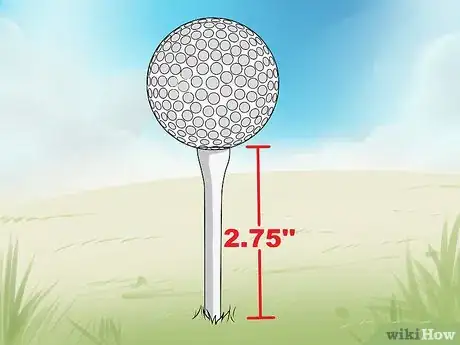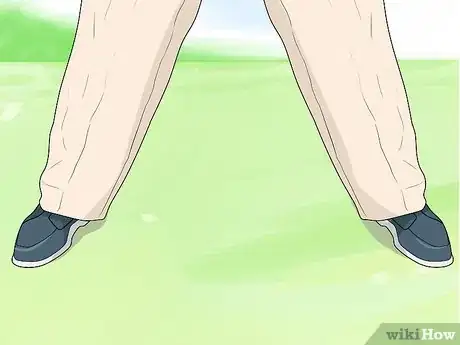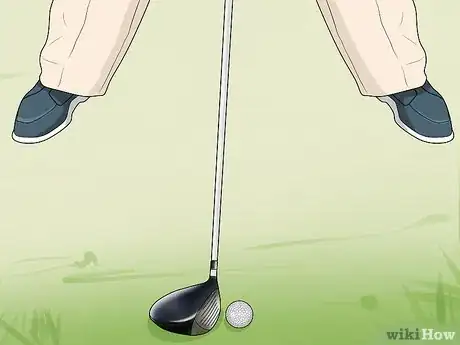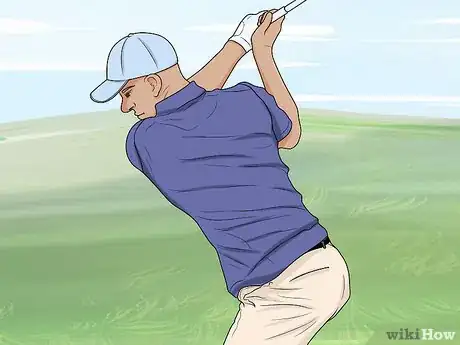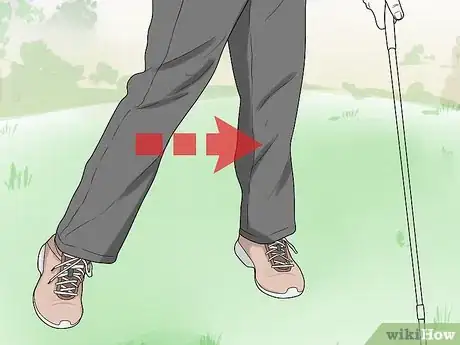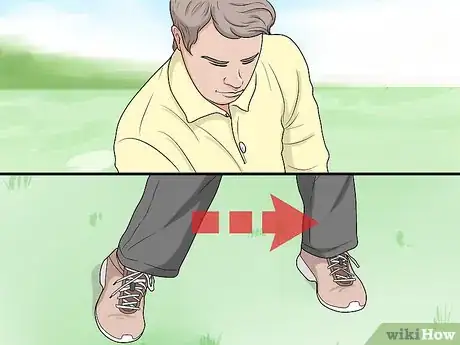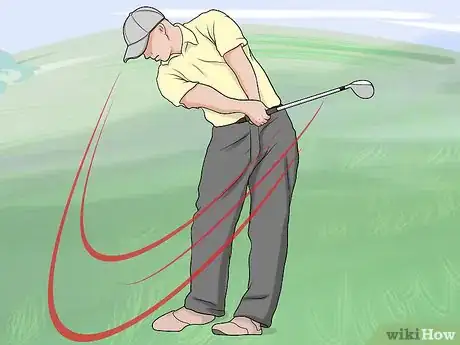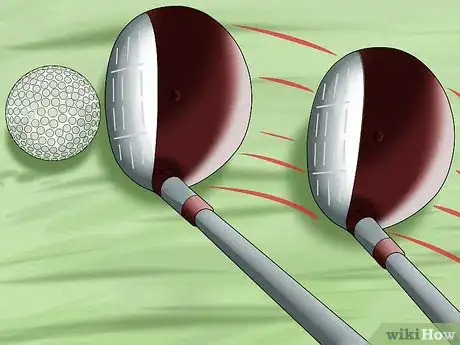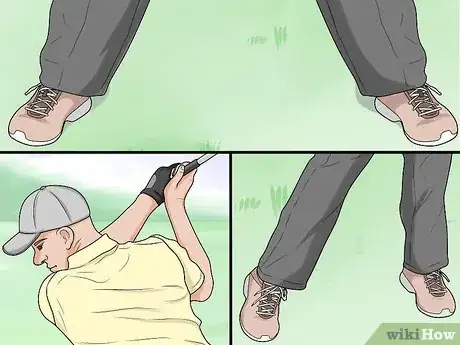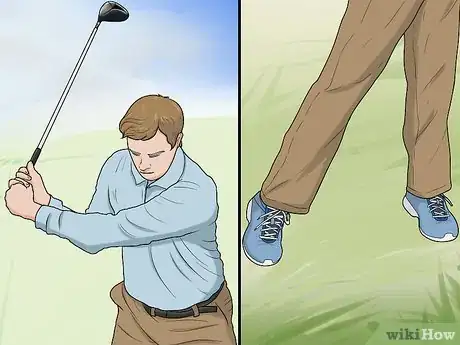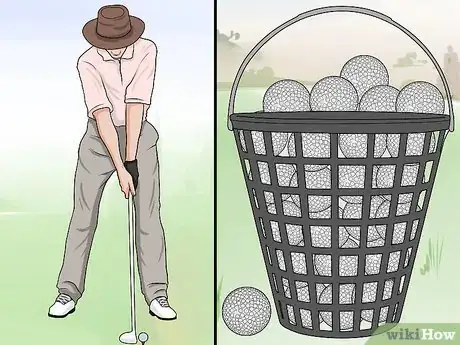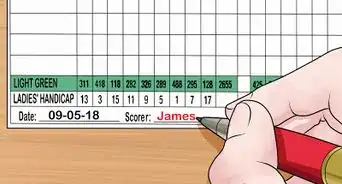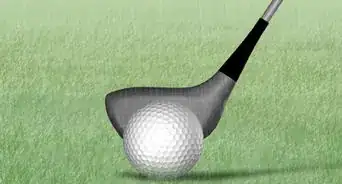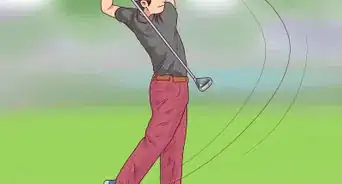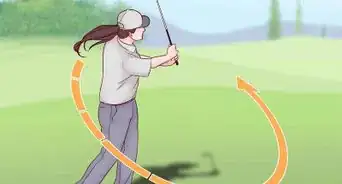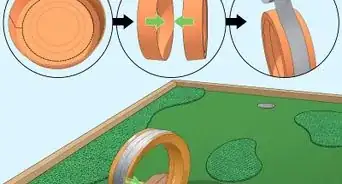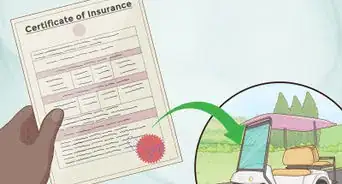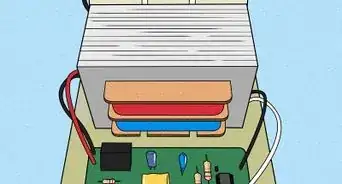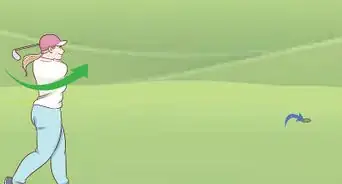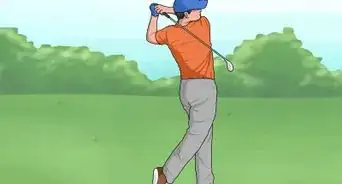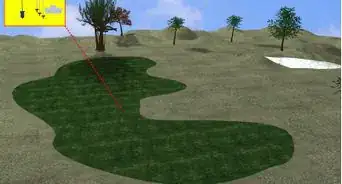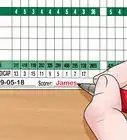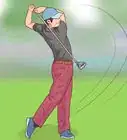This article was co-authored by Michael Metz. Michael Metz is a Golf Instructor and the Director of Instruction at Simi Hills Golf Course. With more than 15 years of experience, Michael is adept at coaching all facets of Golf. Mike uses technology, such as Flightscope, V1 Swing Suite, Blast Motion, and BodiTrak pressure mapping, to provide advanced golf training with quick results.
This article has been viewed 14,388 times.
Driving a golf ball as far as you can while maintaining accuracy is a great way to lower your score and get better as a golfer. Getting distance on the ball is as much about fundamentals and mechanics as it is about power and strength. Even the best of the best need constant practice to drive the ball as far they can. Once you nail the basics, you'll be ready to set new personal records for driving a golf ball!
Steps
Setting Up Your Swing
-
1Tee the ball higher than normal to optimize your launch angle.[1] This allows you to get a good launch angle on the ball. You want to get under the golf ball and let it get some air to maximize the distance. If you have a 2.75 in (7.0 cm) tee, set it up so that only the bottom 0.25 inches (0.64 cm) of it are in the ground.[2]
- Tee heights range from 2.25–4 inches (5.7–10.2 cm), but the most common size is 2.75 inches (7.0 cm). Whichever type of tee you use, make sure only the bottom 0.25 inches (0.64 cm) are in the ground.
-
2Widen your stance to sweep the ball off the tee. You'll feel more stable and can generate more power on the swing without losing your balance. The wider stance also puts your front shoulder lower than your back shoulder, which makes it easier to sweep the ball off the tee.[3]
- Hitting the ball on the upswing will launch the ball higher without giving it backspin. This is ideal for more distance.
Tip: If you're a righty, your front shoulder is your left shoulder. If you're a lefty, the opposite is true.
Advertisement -
3Place the ball forward in your stance to generate power behind it.[4] If you're a righty, this means the tee should be just inside your left heel. Once you do this, place 60% of your weight on your right side to give your body the needed tilt to launch the ball upwards. Your spine should lean slightly to your right.[5]
- Lefties should place 60% of their weight on their left side.
-
4Synchronize your hands and arms with your core. Your body should move in one fluid motion to get the perfect swing. Good synchronization starts with the first few feet of the swing, which leads to a smooth backswing and solid contact. Keep your right glute and quad firm to prevent your backswing from going back too far.[6]
- Once your back hip stops turning, you've reached the top of your backswing.
Striking the Ball off the Tee
-
1Shift the majority of your weight to your front foot. For righties, this means moving your weight from your right foot to your left foot. By the time you hit the ball, the majority of your weight should be on that front foot.[7] If your weight has not shifted properly, the ball's distance and accuracy will suffer.[8]
- Shift your weight in a fluid motion. If you find yourself hesitating, stop your swing and restart again after a taking a break for a few seconds.
-
2Stay loose and relaxed as you shift your weight. If your body tightens up, you won't be able to generate enough power to drive the ball as long as you'd like. Your elbows and knees should be loose, not locked up.[9]
- Before you swing, take a few deep breaths as a way to keep yourself loose but focused.
-
3Accelerate your swing right as you reach the ball to keep your power.[10] Many amateur golfers use up so much energy early in the swing that they don't have enough speed to drive through the ball and send it as far as they want. If you try to swing at full speed from the top of your backswing, you're going to slow down once you reach the ball. To make sure the club is moving fastest when it impacts the ball, begin to speed up the swing when the club is in line with your back leg.[11]
- A clubhead accelerating is not gradual. It happens incredibly fast, so the more swings you take off the tee, the more control you'll have when you drive the ball.
Tip: You'll know if you swung properly if the swing's momentum carries the club up and around your body.
-
4Keep the clubface stable to ensure solid contact. The toe of the club moves faster than the heel, which is why it's so important to keep your hands, arms, and core synced up. If your body isn't lined up, you could hit the ball with the outside of the clubface and make weak contact. The faster you move through your shot, the more stability you'll have.[12]
- Constant practicing is the best way to increase the length of your drives.
Practicing with Your Driver
-
1Work on each part of your swing individually to nail the motion. Spend a few minutes working on the perfect stance for you. Then, practice your backswing by itself and keep track of when your back hip stops so you know when to begin bringing the club forward. Finally, work on shifting your weight and following through with the swing.[13]
- Spend an equal amount of time on each part of your swing. Allot 15 minutes for the backswing, weight shift, and follow through to build good habits.
-
2Take swings without a ball to practice. You can do this in your garage or in a different part of your home with ample space. Try to get to the point where your swing looks the exact same every single time, so repeat your swing until you feel comfortable with it.[14]
- Make sure there's nothing in your swing path that's in your way. If the weather is good, practice these swings outside.
Warning: Picking up bad habits is just as easy as learning good habits, so if you feel like you've swung incorrectly a few times in a row, take a break. Give yourself 5 minutes to regroup and then get back to practicing.
-
3Go to your local driving range to hit a bucket of balls. There's nothing like hitting a bunch of golf balls to really nail down your swing. Head to a driving range that's close to you and rent a bucket of golf balls. The nice part about going to the range is it's pretty cheap, as a bucket of balls shouldn't cost more than 8-10 dollars.[15]
- There's no rush when it comes to practicing on the driving range, so take your time. Swinging your driver over and over again in rapid succession doesn't let you focus on getting the swing as good as it can be. Take short breaks every so often to let your body and mind regroup.
References
- ↑ Michael Metz. Golf Instructor. Expert Interview. 24 March 2022.
- ↑ https://www.golfdigest.com/story/dustin-johnson-how-to-hit-longer-drives
- ↑ https://www.golfdigest.com/story/dustin-johnson-how-to-hit-longer-drives
- ↑ Michael Metz. Golf Instructor. Expert Interview. 24 March 2022.
- ↑ https://www.golf-monthly.co.uk/tips/justin-rose-7-ways-to-hit-longer-drives-145097
- ↑ https://www.golf-monthly.co.uk/tips/justin-rose-7-ways-to-hit-longer-drives-145097
- ↑ Michael Metz. Golf Instructor. Expert Interview. 24 March 2022.
- ↑ https://practical-golf.com/how-to-hit-driver-farther/
- ↑ https://practical-golf.com/how-to-hit-driver-farther/
- ↑ Michael Metz. Golf Instructor. Expert Interview. 24 March 2022.
- ↑ https://www.golfdigest.com/story/dustin-johnson-how-to-hit-longer-drives
- ↑ https://www.golf-monthly.co.uk/tips/justin-rose-7-ways-to-hit-longer-drives-145097
- ↑ https://www.golf-monthly.co.uk/tips/justin-rose-7-ways-to-hit-longer-drives-145097
- ↑ https://practical-golf.com/how-to-hit-driver-farther/
- ↑ https://www.golfdigest.com/story/dustin-johnson-how-to-hit-longer-drives
